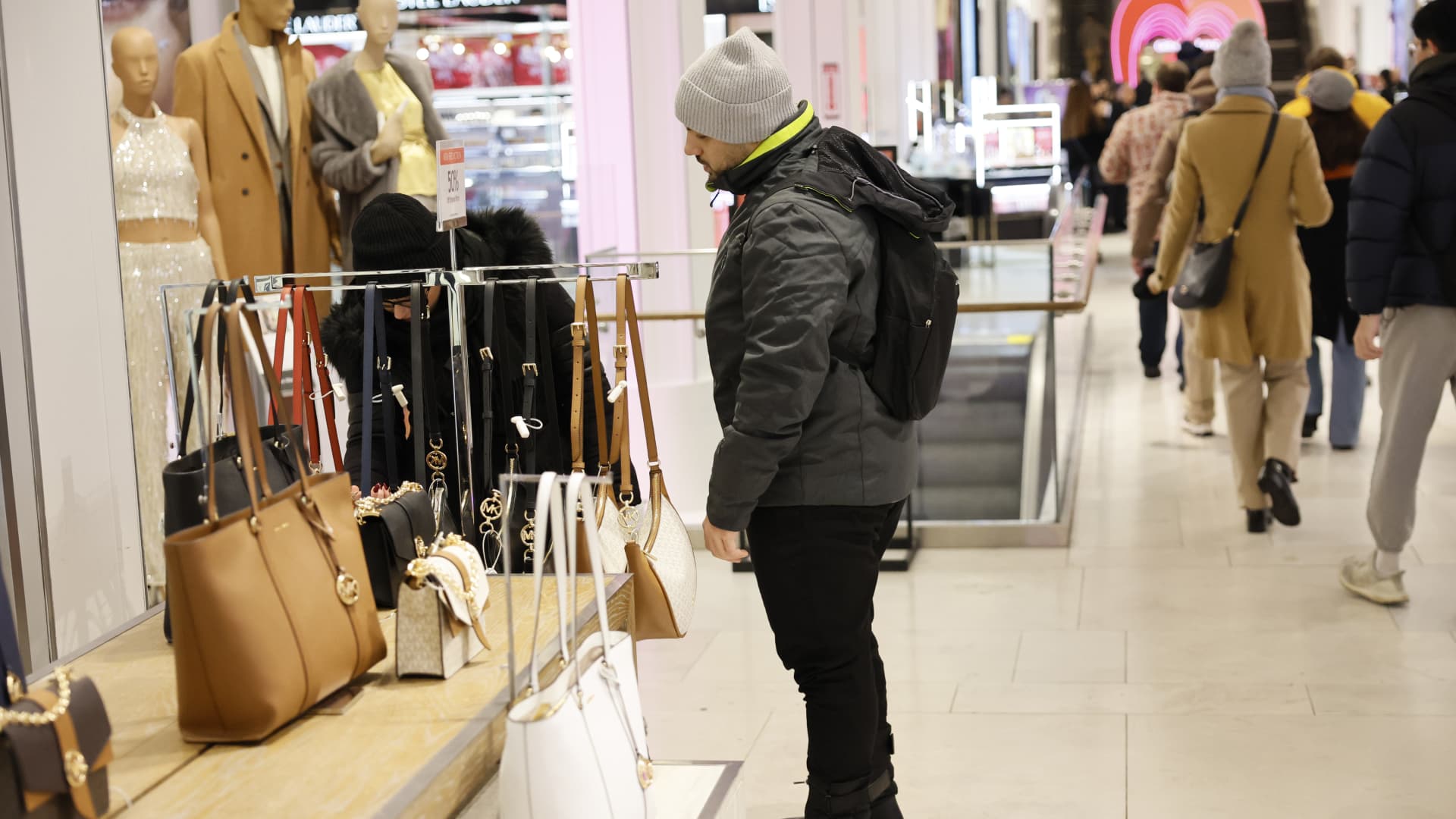Products You May Like
As Macy’s chases sales growth, the department store operator said Tuesday that it will close about 150 of its namesake stores and open more shops with better locations or a luxury focus.
The changes reflect a focus on what’s working at Macy’s — higher-end department store Bloomingdale’s and beauty chain Bluemercury — and what’s not — its namesake stores, particularly the ones at struggling malls. In its holiday quarter results posted Tuesday, the retailer said its Macy’s department stores performed worse than both Bloomingdale’s and Bluemercury.
As it reported earnings, Macy’s shared its strategy for the future. The strategy shift comes weeks after former Bloomingdale’s CEO Tony Spring started as Macy’s CEO earlier this month.
Macy’s had already announced in January that it would close five namesake stores and lay off more than 2,300 people.
In a CNBC interview on Tuesday, Spring said the company is shaking up its store footprint after taking a hard look at which stores are in the right spots — and which are not.
“We have some stores that are just underproductive or not as profitable, and we have to address that,” he said. “Conversely, we have stores that are highly productive and highly profitable. We have markets and stores and centers we’re not in today that we’d like to be in.”
Here’s a closer look at Macy’s major store announcements, broken down by store brand.
Macy’s
Sales at Macy’s namesake stores have lagged the most — and that business will see the biggest changes.
The company plans to close about 150 stores, including 50 that will close by early 2025. It has not shared those locations, but said they are “unproductive.”
The stores that it had already said would be shuttered are located in Arlington, Virginia; San Leandro, Calif.; Lihue, Hawaii; Simi Valley, Calif. and Tallahassee, Florida. The stores will close early this year.
On the other hand, Macy’s said it will boost investments in the roughly 350 namesake locations that will remain open.
For example, Spring said in an interview with CNBC that the company is testing how it can improve customer service at 50 of its stores. In the most recent quarter, it added or moved employees to different roles in those locations, such as by offering more support in the fitting room and shoe department.
The company is also pressing ahead with its strategy of opening smaller Macy’s stores in suburban strip malls. Last year, it announced it would open up to 30 of the shops over the next two years. The locations are roughly one-fifth the size of its traditional mall stores.
Spring told investors on an earnings call that there is a sharp difference between the Macy’s stores the company is closing and the ones that will remain open. The 150 stores that will shut represent 25% of Macy’s square footage, but less than 10% of its sales, he said.
“They’re underproductive and we have to focus on making sure that we have the best stores, not the largest number of stores,” he said on the earnings call.
Along with considering the economics, he said a team at Macy’s spent about six or seven months evaluating stores based on other factors, including customer demographics, digital demand and the condition of the store or shopping center.
As of Feb. 4, Macy’s had about 500 namesake stores. Most are its typical mall locations, but that total also includes some of its smaller shops and freestanding locations of Macy’s off-price banner, Backstage.
Bloomingdale’s
Bloomingdale’s, which has outperformed the Macy’s namesake stores, will soon have more shops.
The retailer plans to open about 15 new Bloomingdale’s stores over the next three years. It has not announced the specific locations, but said some will be in new markets.
The higher-end department stores skew towards higher-income and fashion-forward shoppers, and carry many popular luxury brands.
Like with its sister brand Macy’s, Bloomingdale’s has been testing a smaller concept store called Bloomie’s.
At the end of the most recent fiscal year, Bloomingdale’s had 33 locations. There are also three Bloomie’s shops and 21 outlets.
Bluemercury
Bluemercury has been the brightest spot in the retailer’s performance: it was the only brand of the three to post comparable sales growth in the fourth quarter.
The beauty chain will get bigger in the next few years, too. Parent company Macy’s said it will open at least 30 new Bluemercury stores over the next three years. It will also remodel roughly 30 existing stores during that time. Some of those will be in new markets, the company said.
Bluemercury has been testing a new store prototype, which includes more spa services. It’s rolled out the concept in two locations: New Canaan, Conn. and Bronxville, N.Y.
Macy’s acquired Bluemercury for $210 million in 2015. As of Feb. 4, the beauty chain has 159 locations.
